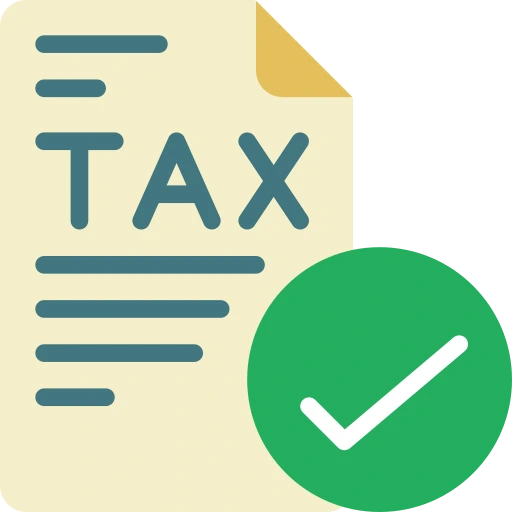Equity and Mutual Funds Saving Schemes
Equity Linked Saving Schemes (ELSS) are a unique category of mutual funds that offer investors the dual advantage of potential returns from equity investments along with tax-saving benefits under Section 80C of the Income Tax Act, 1961.
Key Features of ELSS Mutual Funds
Equity-Centric Investment: ELSS funds primarily invest in equities and equity-related instruments, allocating at least 80% of their assets to the stock market. This equity exposure provides the potential for higher returns over the long term, capitalizing on the growth potential of well-performing companies.
Tax Benefits: One of the primary attractions of ELSS funds is their eligibility for tax deductions under Section 80C of the Income Tax Act. Investors can claim deductions of up to Rs. 1.5 lakh annually on their investments in ELSS funds, effectively reducing their taxable income and lowering their tax liability.
Potential for Wealth Creation: ELSS funds offer investors the opportunity to accumulate wealth over the long term, making them suitable for achieving various financial goals such as building a retirement corpus, funding higher education, or purchasing a house. By staying invested for an extended period, investors can benefit from the power of compounding and market appreciation.
Short Lock-in Period: ELSS funds come with a mandatory lock-in period of three years, which is one of the shortest among tax-saving investment avenues. This relatively brief lock-in period provides investors with liquidity and flexibility compared to other tax-saving instruments like the Public Provident Fund (PPF) or National Savings Certificate (NSC), which have longer lock-in periods.
Professional Management: ELSS funds are managed by experienced fund managers who conduct in-depth research and analysis to identify promising investment opportunities in the equity market. Investors benefit from the expertise of fund managers in stock selection and portfolio management, aiming to optimize returns while managing risks.
Systematic Investment Option: Investors can opt for systematic investment plans (SIPs) to invest in ELSS funds regularly, allowing them to benefit from rupee-cost averaging and disciplined investing over time. SIPs enable investors to accumulate units of the fund at varying market prices, potentially reducing the impact of market volatility on their investment returns.
Determining the optimal time to invest in Equity Linked Saving Scheme (ELSS) funds requires careful consideration of various factors beyond just tax-saving opportunities. While many investors rush to invest towards the end of the financial year to avail tax benefits, it's essential to adopt a strategic approach focused on long-term wealth accumulation rather than solely tax-saving motives.
Why Timing Matters
Long-Term Investment Horizon: The primary objective of investing in ELSS funds should be wealth creation over the long term rather than short-term tax savings. By adopting a long-term investment horizon, investors can potentially benefit from the power of compounding and market appreciation, maximizing their returns over time.
Mitigating Market Volatility: Investing in ELSS funds through Systematic Investment Plans (SIPs) allows investors to spread their investments over time, reducing the impact of market volatility. Instead of trying to time the market, SIPs enable investors to benefit from rupee-cost averaging, buying more units when prices are low and fewer units when prices are high, ultimately leading to a lower average cost per unit.
Aligning with Financial Goals: Before investing in ELSS funds, investors should clearly define their financial goals, whether it's saving for retirement, purchasing a house, or funding education expenses. By identifying investment objectives at the beginning of the year, investors can tailor their investment strategy accordingly, ensuring alignment with their specific financial goals and risk tolerance.
Features of ELSS Funds
Brief Lock-in Period: ELSS funds offer a relatively short lock-in period of three years compared to other tax-saving instruments like Public Provident Fund (PPF) or tax-saving Fixed Deposits (FDs), which have longer lock-in periods. This flexibility allows investors the option to withdraw funds earlier if needed for pressing financial goals.
Potential for Inflation-Beating Returns: ELSS funds primarily invest in equities, offering the potential for higher returns compared to traditional tax-saving options. By investing in the stock market, ELSS funds aim to outperform inflation over the long term, thereby preserving and growing investors' purchasing power.
Tax Efficiency: Investments in ELSS funds qualify for tax deductions under Section 80C of the Income Tax Act, allowing investors to claim deductions of up to Rs. 1.5 lakh annually. Additionally, long-term capital gains (LTCG) up to Rs. 1 lakh are tax-exempt, making ELSS funds a tax-efficient investment avenue for wealth creation.
In conclusion, the best time to invest in ELSS funds is at the beginning of the year, aligning with a long-term investment horizon and strategic financial goals. By investing steadily through SIPs and focusing on wealth creation rather than short-term tax savings, investors can harness the potential benefits of ELSS funds for long-term financial success.
Below is a comparison between Equity Linked Saving Schemes (ELSS) and other tax-saving investment avenues, highlighting their lock-in periods and investment risks.
| Tax-Saving Investment | Lock-in Period | Investment Risk |
| ELSS | 3 years | High |
| Public Provident Fund (PPF) | 15 years | Low |
| Tax-Saving Fixed Deposits | 5 years | Low |
| National Pension Scheme (NPS) | Till retirement | Moderate |
| National Savings Certificate (NSC) | 5 years | Low |
Comparison
Lock-in Period
- ELSS funds have the shortest lock-in period of three years among the listed options. This means investors have relatively quicker access to their funds compared to PPF and NPS, which have significantly longer lock-in periods of 15 years and until retirement, respectively.
Investment Risk
- ELSS funds are associated with higher investment risk due to their exposure to equities. However, they also offer the potential for higher returns over the long term. In contrast, PPF, Tax-Saving Fixed Deposits, and NSC carry lower investment risk but may offer comparatively lower returns.
- NPS falls in between with a moderate level of investment risk, as it offers a mix of equity, corporate bonds, and government securities in its investment portfolio.
Additional Considerations
- ELSS funds provide investors with the flexibility to invest through Systematic Investment Plans (SIPs), allowing them to invest regularly with smaller amounts. This promotes investment discipline and helps mitigate the risk associated with market volatility.
- While ELSS funds offer the potential for higher returns, investors should be prepared to withstand fluctuations in the stock market. Adopting a long-term investment approach can help mitigate short-term volatility and maximize returns over time.
- PPF, Tax-Saving Fixed Deposits, and NSC are considered safer options with guaranteed returns, making them suitable for investors with lower risk tolerance or shorter investment horizons.
- NPS offers a blend of equity and debt investments, providing a balance between risk and potential returns. It is suitable for investors looking to build a retirement corpus over the long term.
In conclusion, while ELSS funds may carry higher investment risk, they offer the potential for superior returns and shorter lock-in periods compared to other tax-saving options. Investors should carefully evaluate their risk tolerance, investment goals, and time horizon before selecting the most suitable tax-saving investment avenue
























